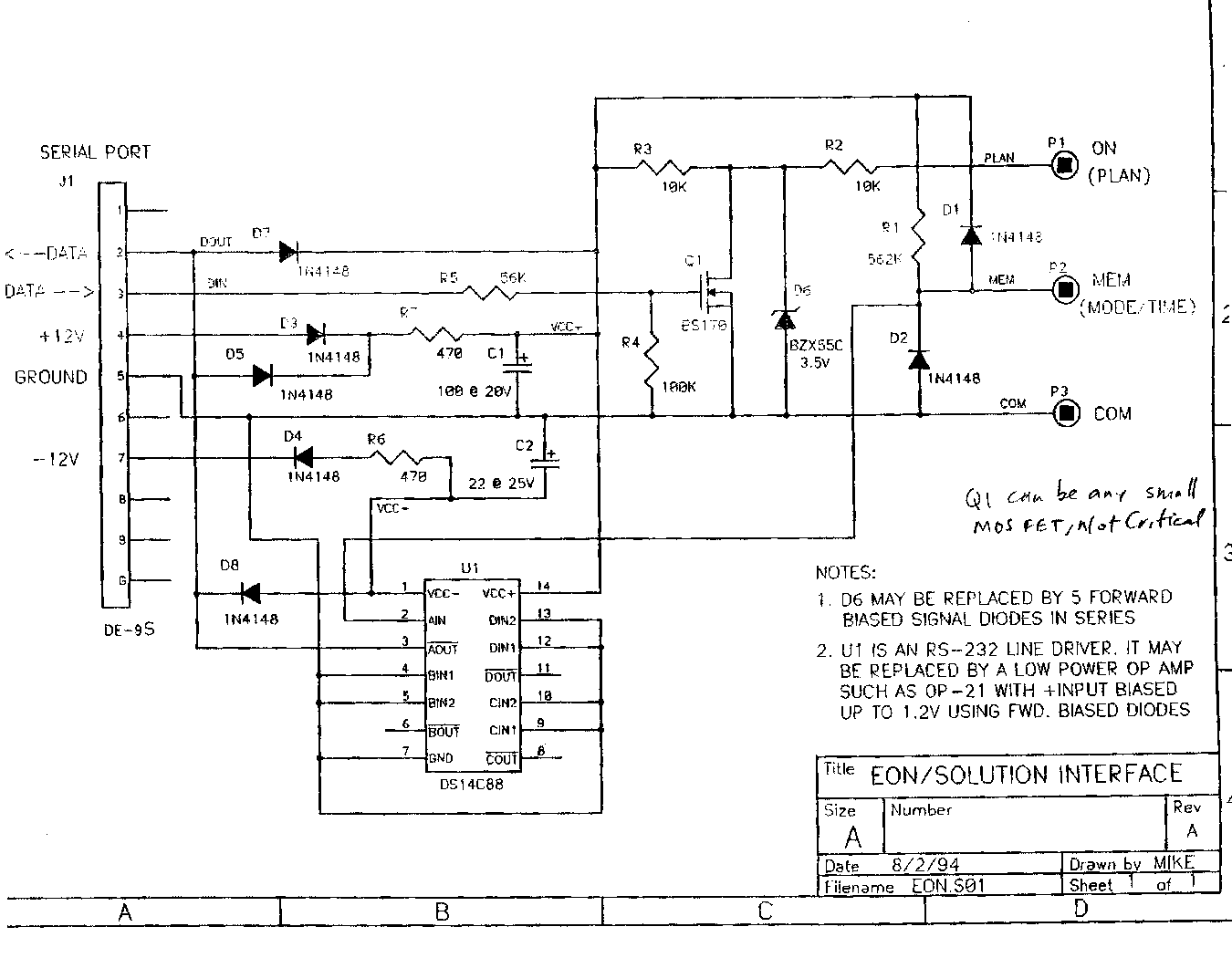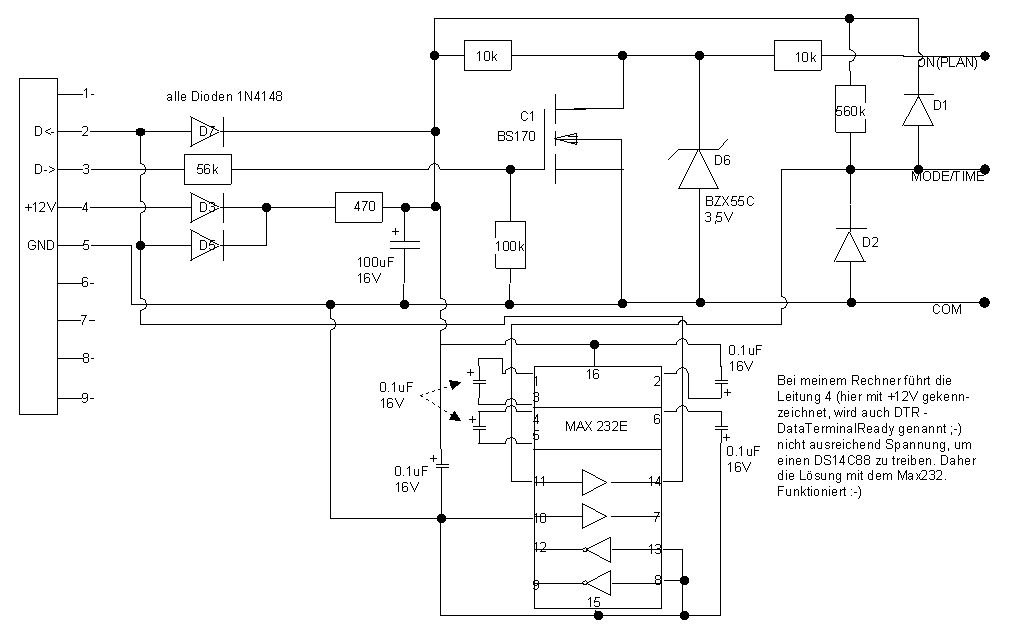Suunto Interface
go to Vyper Interface
Solution/EON Interface:
The picture looks better in full size (but look at Dave Cordes site - the same plan just better look).
Source lost - I only changed R1 to1MOhm because 560kOhm didn't work from start. U1 has to be a CMOS type.
Dave Cordes has a very good homepage about this topic. There is also a description for mechanic contacts.
I started with another way and finished that. It looks very homemade which it is - but is works.
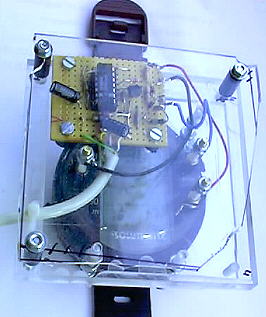

from above and below
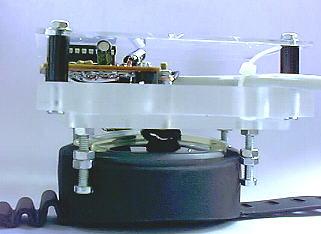 and from the
side
and from the
side
The basis is a piece of persplex I had left from another project. 4
bolts (M4) give a lead to the computer case. 3 bolts (M3) give contacts.
Because of the transparent material it is very easy to find the correct
position for the contacts.
First I soldered the bolt heads as contacts. But I got better results with
conductive moss rubber I fixed with wire to the bolts. It is normally used
to protect CMOS ICs against static charges and every electronics shop should
have it. It is smooth like the material of the original interface.
Another plate shields the electroni and cables. The cable is fixed with
cable fix.
In contrast to the original I don't have to remove the protective cover.
The good software can be downloaded at Suunto .
The circuit above seems to have problems with some PCs, because the voltages are often too low. Ralph Behrens has made some modifications and I present here his new plan (click at it to get a better picture):
Patrick L'huillier sent me CAD data for that: eon_if.zip
Vyper Interface
The long awaited plan for a Vyper Interface finally came up: http://subaqua.web.cern.ch/subaqua/techniques/suunto/suunto.htm
Some remarks:
- At first nothing worked. I then measured more than 1,6V over the 3 diodes (today it's only 1,4V ? ) (PC gives +9,7 -7,8V). My Vyper has 1,7V at the contacts with nothing attached (TR-PC). In use the Vyper signal is between 0V and -2V. So I think the comparator level may be too high. I took away one of the diodes (-> 1,07V) and adjusted the Low Voltage to -2,5V (-3,2 is possible with R1 10KOhm) and it works. I don't know how the circuit behaves at a low voltage serial port (+-3V) ?
- Another point. When I leave the download dialog the voltage at the Vyper contacts reaches -7V (+9V level lost). Perhaps a Zenerdiode (4-5V) or something like that would be good idea.
- The circuit diagram has a point to wonder: the pins at the second half of the OP. U1A and U2A are two halves of one chip (Pins 1,2,3 become 7,6,5)
And here my idea for the mechanics:
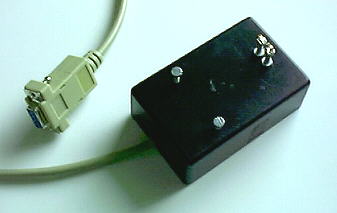
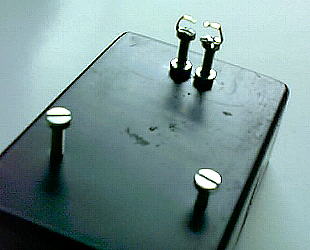
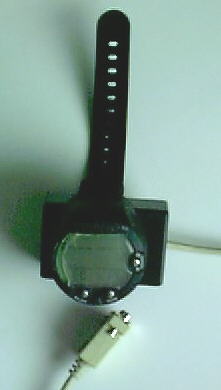 I screwed
M3 bolts to a small plastic case, which holds the PCB. The contacts are
from PCB connectors like the ones found on every PC motherboard. I soldered
them to the bolts. The boltheads are also filed, to get a good fit into
the opening at the Vyper. The other two bolts give a good fit. To get some
contact force, just close the strap.
I screwed
M3 bolts to a small plastic case, which holds the PCB. The contacts are
from PCB connectors like the ones found on every PC motherboard. I soldered
them to the bolts. The boltheads are also filed, to get a good fit into
the opening at the Vyper. The other two bolts give a good fit. To get some
contact force, just close the strap.
Of course a machined plastic part which fits neatly inside the opening with spring contacts would be the better solution but it works my way too.
At http://www.geocities.com/scubadiver_roli/english.html
there is another variation of the circuit and a plan for a casing for Suunto
ACW/Spyder/Stinger.
back to homepage
